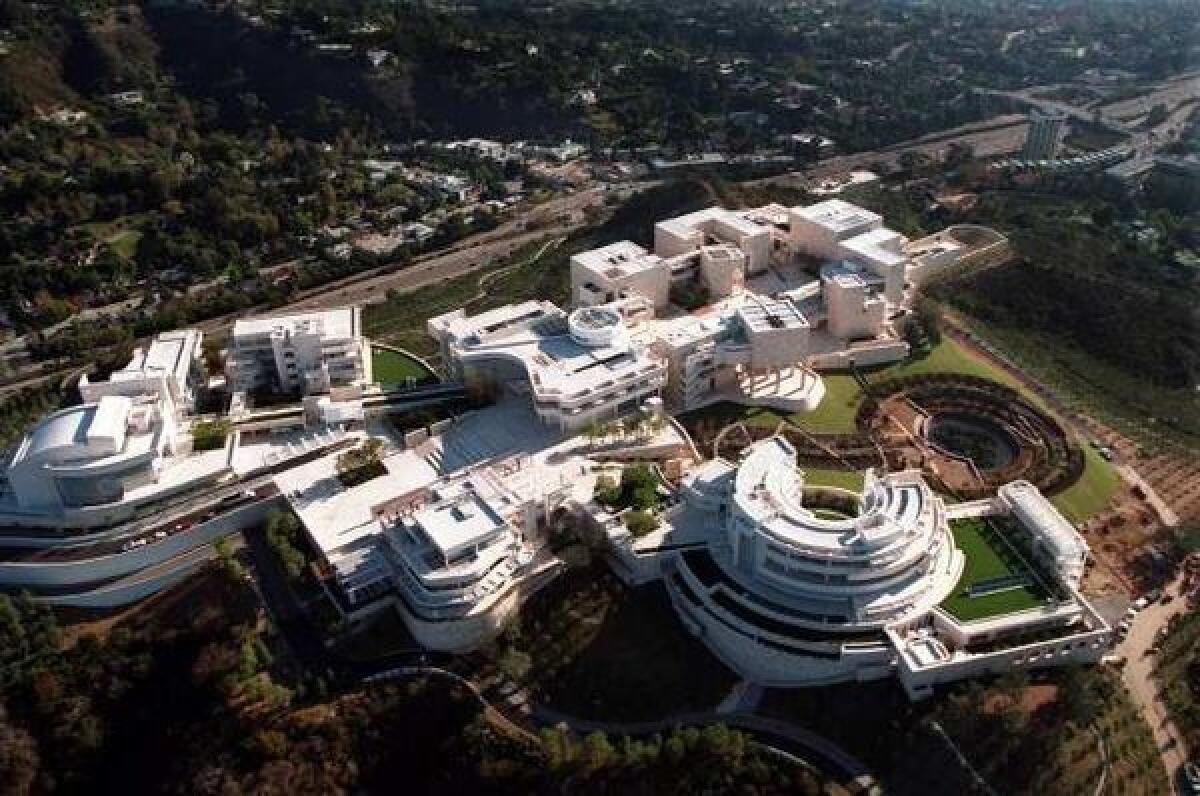16% of U.S. museums say they risk closing forever in a prolonged pandemic

One in every six American museums faces “significant risk” of closing permanently because of financial duress exacerbated by the COVID-19 pandemic, according to survey results released Wednesday by the American Alliance of Museums.
Of 648 museum directors who answered a survey question about the threat of permanent closure, 16% said there was significant risk that operations would cease within 16 months if coronavirus-related closures continued and institutions could not find financial relief.
Endowments and other financial reserves are often not large enough to keep museums afloat very long. Of 521 museums that responded to a survey question about operating reserves, only 1 in 3 said it had reserves that would last a year or more. The majority — 56% — said reserves would last six months or less.
“It’s mind-boggling,” American Alliance of Museums President Laura Lott said in an interview. “For hundreds of years, museums have been there to collect, preserve, interpret and share what our culture determines is important for future generations to be able to experience and be inspired by and learn from. And the prospect of [so much] of that going away is really devastating to a culture.”
A+D Museum’s coronavirus-related closure provided time for leaders to rethink the future and shift to online programming and events in various cities.
The federal Paycheck Protection Program, Lott said, has been a lifeline for many museums during the last few months.
“Congress is considering another reiteration of it in the latter half of this year, but as it stands right now, that funding runs out for many museums this summer,” she said. “I fully expect we’ll see another round of layoffs and furloughs and potential closures as a result of struggles many of us thought would be better by now.”
California museums have been living in limbo for months. Every major museum in the state closed in mid-March and watched the health crisis unfold while awaiting guidance from government and health officials. In mid-May, Gov. Gavin Newsom gave so-called “outdoor museums” and open-air galleries the green light to reopen, but L.A. County, which was still experiencing high COVID-19 case counts, put the kibosh on those plans.
On June 12, L.A. County allowed all museums, outdoor and otherwise, to reopen. Some did so right away. The Huntington Library, Art Museum and Botanical Gardens in San Marino reopened to members June 17, and the Petersen Automotive Museum opened to the public June 19. Others, such as the Getty Museum, the Hammer Museum and the Los Angeles County Museum of Art, were more cautious, targeting their reopenings for later in summer or fall. Still others, such as the Museum of Contemporary Art, didn’t offer timelines at all.
Then on July 1, as COVID-19 infections continued to climb, Newsom ordered indoor venues including museums to close again. L.A. Mayor Eric Garcetti has warned of an imminent second stay-at-home order, which would keep museums here closed for the foreseeable future.
“This is similar to museums around the country,” Lott said. “Like any business, it’s impossible to create and stick to a plan, to communicate with constituents — visitors, staff, board members, governing authorities — having the [reopening] date repeatedly pulled back. There are costs associated with that.”
The AAM survey was conducted by New Hampshire-based Dynamic Benchmarking and included small, midsize and large museums from around the U.S., including art museums, historical societies, science museums, aquariums and botanical gardens. Sixty-two percent of respondents had annual operating expenses of $1 million or less.
Permanent museum closures leave not only a cultural void but also an economic vacuum. According to the alliance’s 2018 “Museums as Economic Engines” report, museums are responsible for 726,000 salaried and contracted jobs annually. In the AAM survey, 243 museums reported laying off or furloughing at least 20% of their staff.
In response to a survey question about workforce employment, only 50% of respondents said they expect to reopen with the same number of staffers as before the pandemic.
“The effects on local economies, jobs and tourism is devastating in and of itself,” Lott said.
The alliance, a nonprofit accreditation and advocacy group based in Washington, D.C., released the survey results with a call for governments and private donors to fill museums’ funding gaps. Among the arguments: 75% of surveyed museums said that while schools were closed during the pandemic, they were providing digital learning tools to children, parents and teachers — resources such as virtual tours, lesson plans and online events in which children could speak with scientists or artists or work on crafts. These have been critical resources at a time when students need them the most, Lott said.
“There’s an equity issue,” she added. “The parents who have the resources will find tutors, paid educational resources online and other enrichment opportunities for their kids. But museums serve the masses. Where will the rest of the students get all that if schools are closed and a good portion of museums are closed permanently?”
Even for museums that can ride out the pandemic, Lott said, the long-term prognosis is bleak.
“As they reopen we’ll see reduction in services, educational programming, the new exhibits they’re able to mount,” she said. “I just think all of that will be on austerity budgets.”
Museums, she said, can play a vital role in our national recovery.
“In terms of our mental health, museums have always been places of respite — but only if they are here to be able to provide that recovery.”
The Lucas Museum of Narrative Art names all women to six key posts. Five are people of color, notable in a museum world still struggling with inclusion.
More to Read
The biggest entertainment stories
Get our big stories about Hollywood, film, television, music, arts, culture and more right in your inbox as soon as they publish.
You may occasionally receive promotional content from the Los Angeles Times.











